
Water determines the Great Lakes Region’s economic future
Climate change, geopolitics and business opportunities power a blue economy
It’s early February and the fields surrounding Northern Lights Wildlife Society shelter in Smithers, B.C., are bare and brown. Extreme drought conditions that dried up watersheds across Western Canada last year show no sign of easing, with little snow to replenish the parched ground.
Angelika Langen says the property was covered in ice a few days earlier. Now, it feels like spring and the long driveway is a mess of mud. But the unpredictable weather is not what’s on her mind.
“Too many bears,” Langen says simply, when I ask how her day is going.
Her wry answer hints at the connections between the changing climate and how humans and wildlife collide within it. With her family, Langen runs a small dedicated organization known for rescuing and rehabilitating orphaned bear cubs. The drought, combined with a record-breaking wildfire season last year, saw an unprecedented number of little bears, on the brink of starvation, stumbling into communities across the northwest. Langen and her team are currently caring for more than 120 orphaned black bears — the most they’ve had in their 33 years of operation.
“Every time a call comes in, you want to respond,” she says, sighing. “There’s a life at the other end and if you don’t do anything, there’s death. And it’s often very slow and painful dying.”
One of the latest cubs to arrive is perched on a platform inside a small enclosure. Less than a year old, she’s clearly scared and she follows us with her small, dark eyes as we approach. She snaps her jaws a few times, making a clacking sound to tell us she’s not happy about people getting too close. As she shrinks back into the corner, she favours one of her front paws.
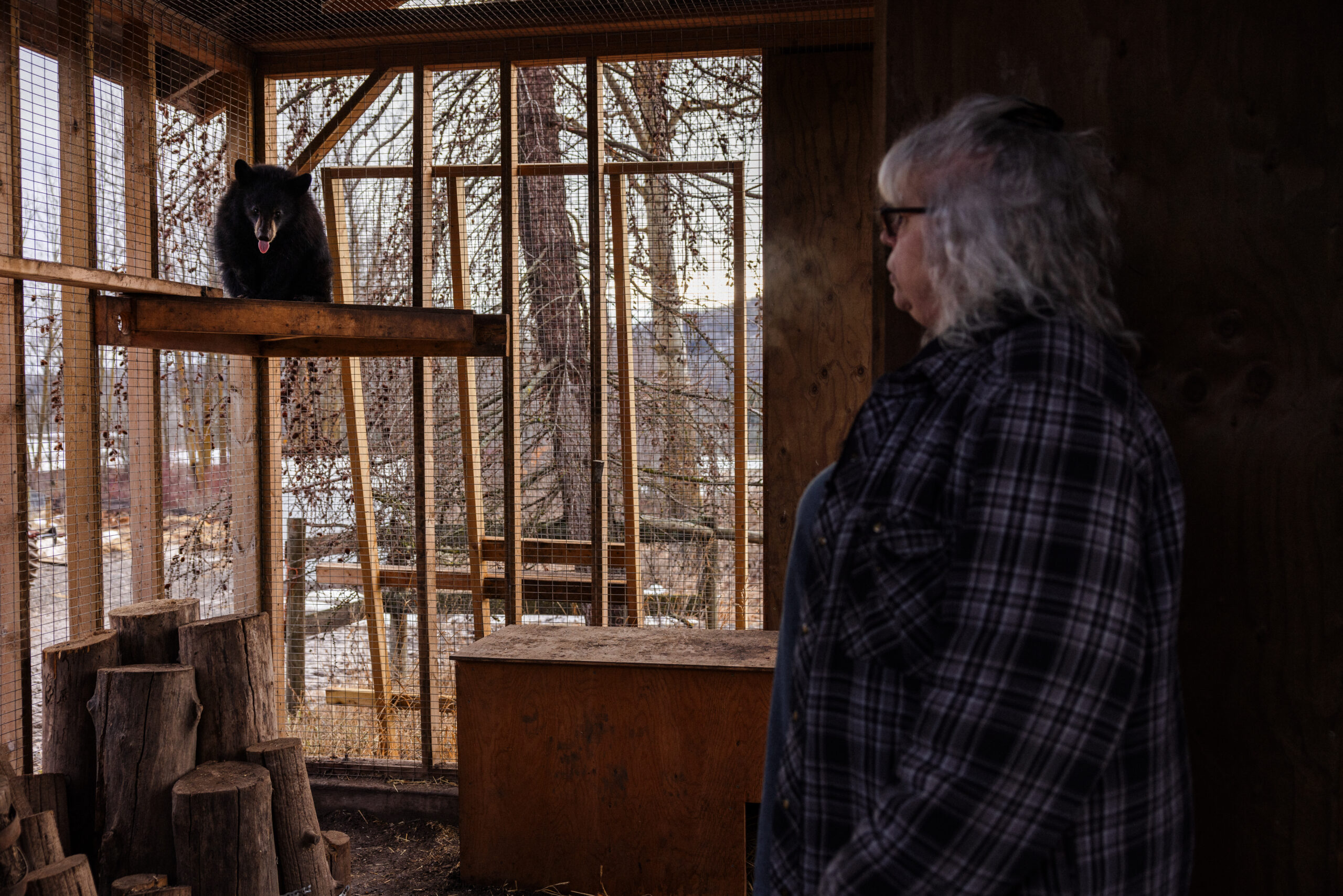
About a week ago, the hungry and dehydrated cub showed up on a farm in Prince George, B.C., about 400 kilometres southeast of Smithers. Finding a hole into a store of livestock feed, she climbed in and ate her fill. After the landowners chased her out and plugged the hole, they called Langen. She told them to chuck a few apples on the ground to keep the cub around until she could get there with a live trap. When she arrived, she saw they’d put out half a dozen loaves of Wonder Bread for the little bear.
“By the time we got there she was so full,” Langen laughs, prepping a tranquilizer to sedate the cub so she can assess its health. She says they had to wait for a few days until the cub got hungry again before they could entice her into a trap.
Because of the bread, they named her Wonder.
Langen and Kim Gruijs, the organization’s head caretaker, successfully sedate the scared little bear and bring her into an examination room, where the two women run through an intake checklist. Holding the cub’s front paw, Langen notes an obvious injury and says they’ll need to follow up with an X-ray at the local animal hospital.
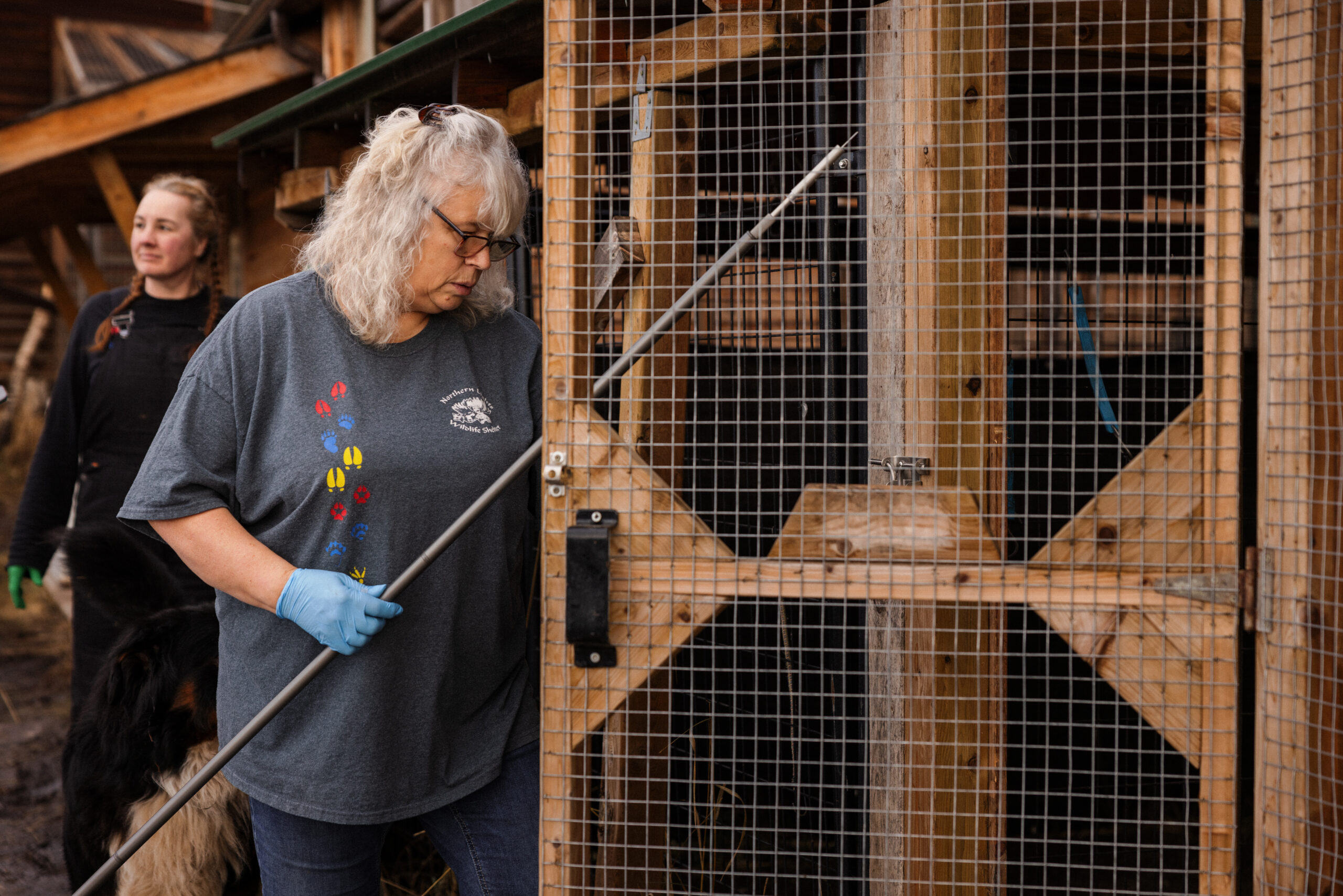
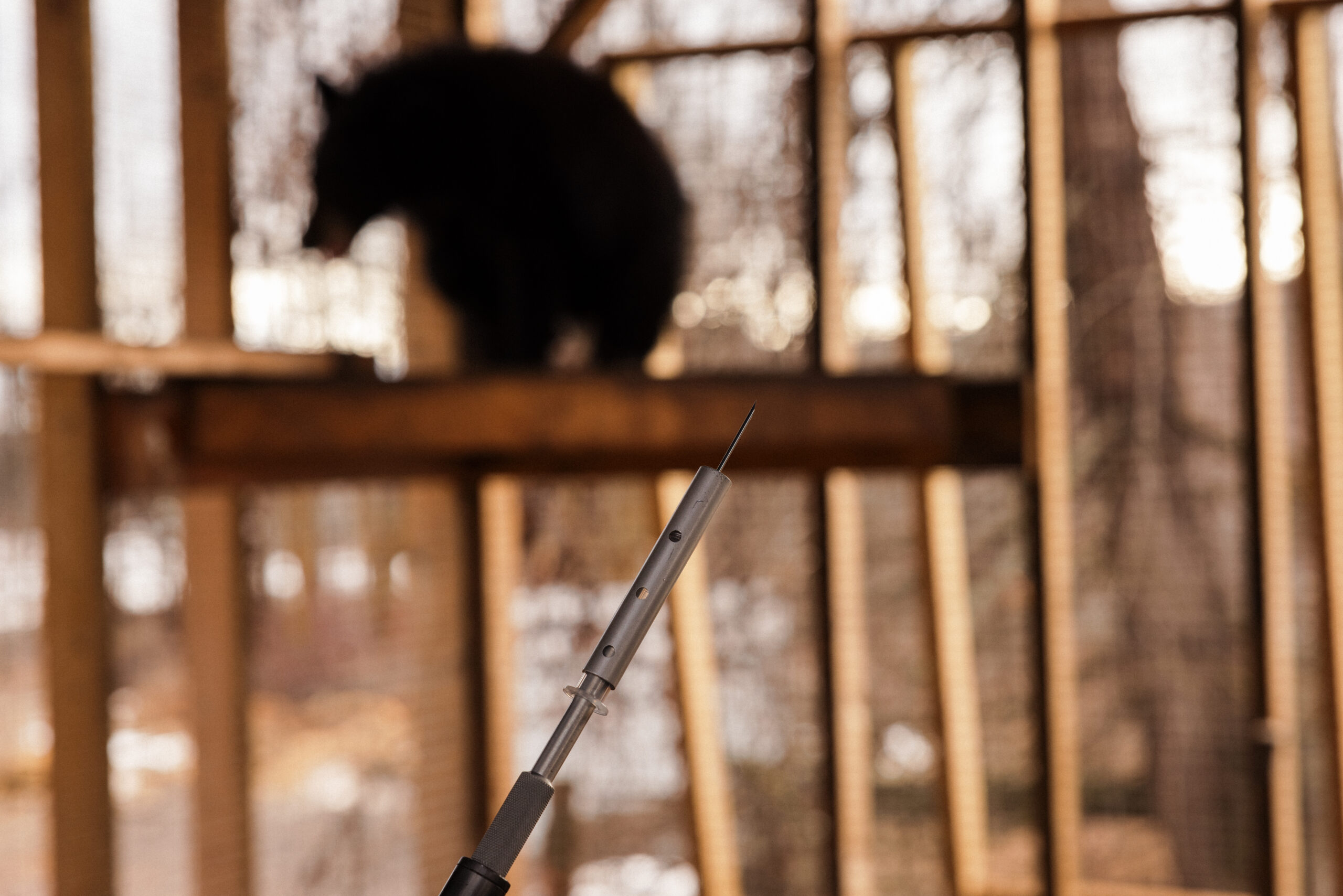
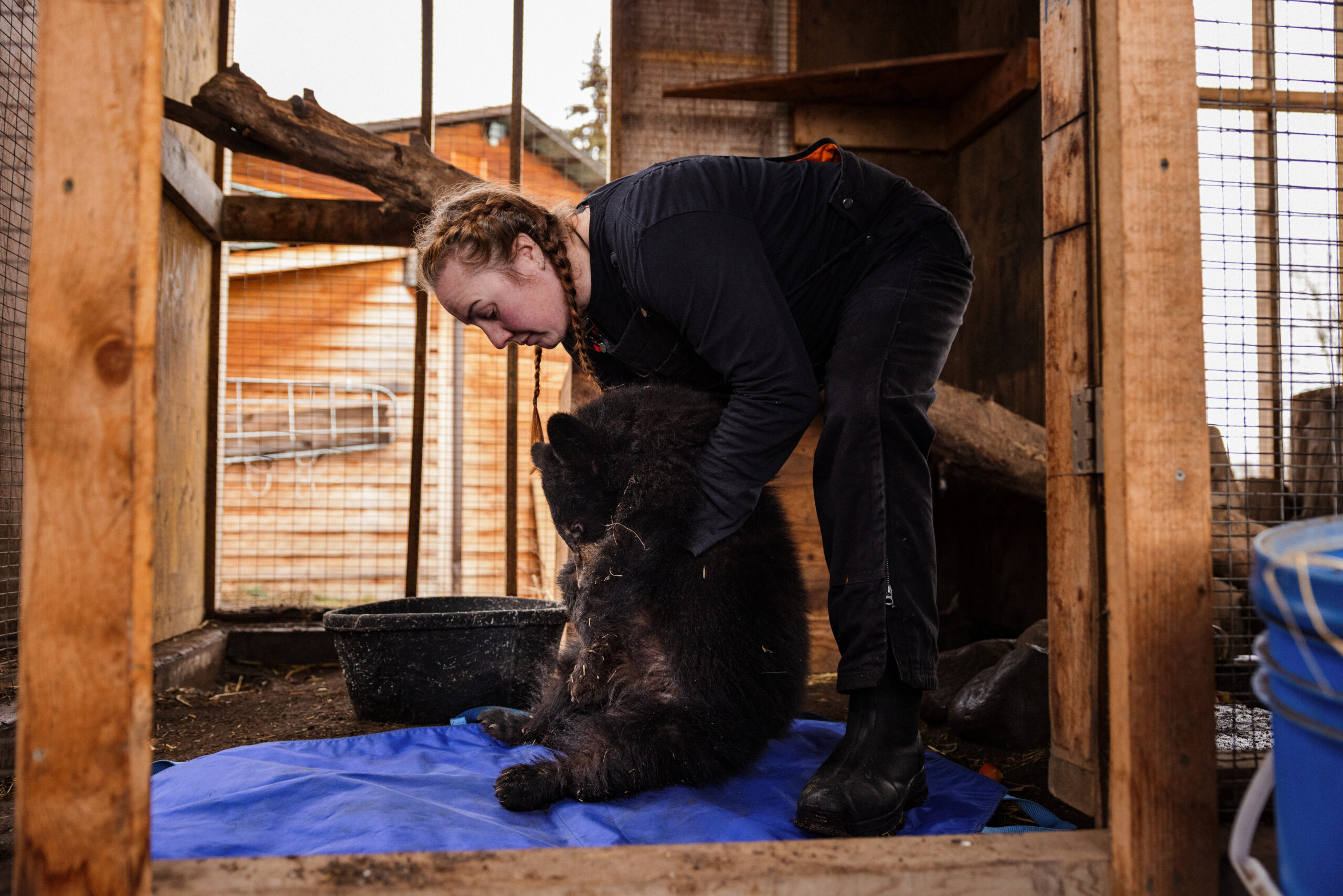
If it’s broken, they might be able to reset the bone, but she says some injuries mean a cub has to be euthanized. While a metal pin or plate might be used to help a pet heal, they can’t do that for a wild bear, which has to hibernate and withstand extreme cold. It’s a hard truth but Gruijs and Langen have been working with the animals long enough to understand that sometimes letting go is a kindness.
“We take comfort in knowing that they’re not suffering out there, even if they don’t make it,” Gruijs says.
“We don’t lose many,” Langen says, noting the survival rate of bears that come to the shelter is more than 80 per cent.
And there’s still hope for this new arrival.
Gruijs says the cub is relatively healthy apart from the injury. At first glance, the little bear looks fine. Her fur is fluffy and she smells fresh, kind of like a dog that’s been running through the forest or a cat that’s just come in from a stroll through tall grass.
Gruijs invites me to feel for the bear’s spine and then her hip bones. Langen says the latter should be hard to find in a healthy bear. Under my fingers, the bones are prominent. The little cub, her body warm and rising gently with her breaths, seems fragile. Her skin is paper thin, a sign of extreme dehydration. And she’s small — way smaller than she should be. But if the bones in her front leg have already rejoined after the injury, it’s not a death sentence.
“Either way, it doesn’t mean that she can’t be released because, if it fuses, at some point it’s not going to hurt anymore and she can still use the leg,” Langen explains.
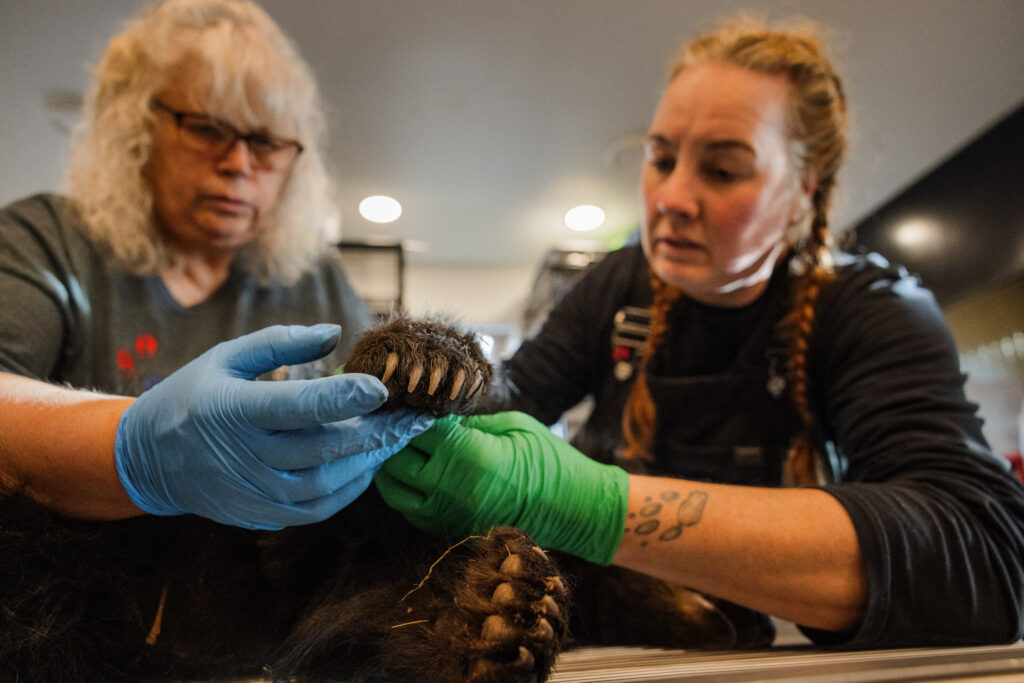
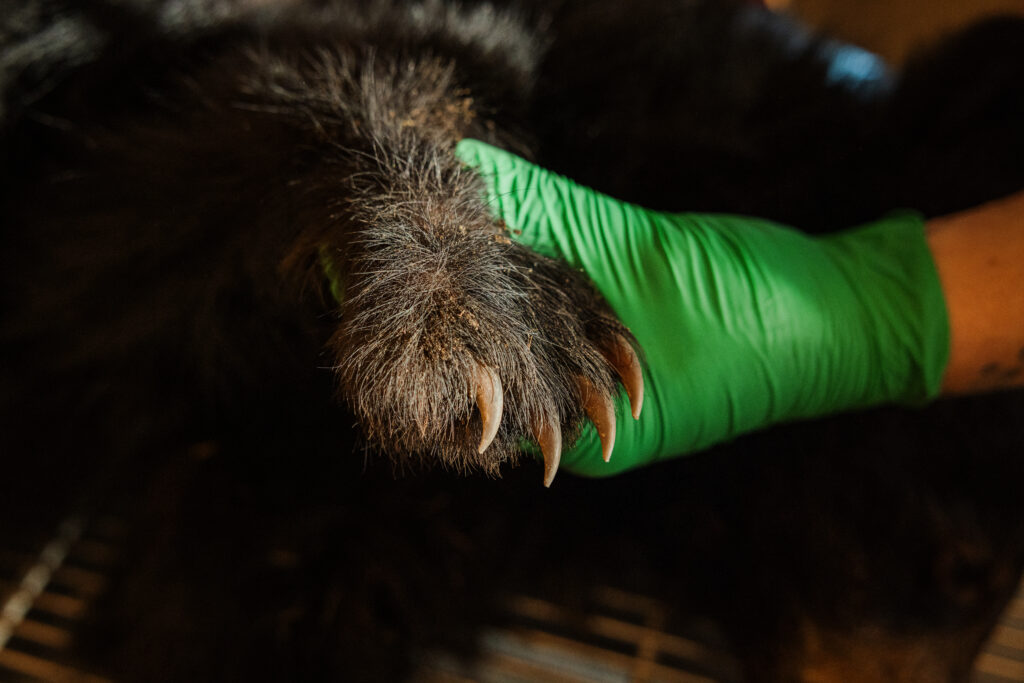
Release is, of course, the end goal.
Orphaned cubs who come to Northern Lights are only there for a few months and have minimal contact with humans to make sure they don’t get used to being around people. Langen jokingly refers to the “room service” they offer the bears, which includes a steady supply of fruits and vegetables donated by local grocery stores. Once the bears are old enough — and fat enough — the team takes them back to the region they were found, finding a suitable place away from humans to release them.
“That’s the best part — release,” Gruijs says. “That’s your paycheque. That’s what you’re doing it for.”

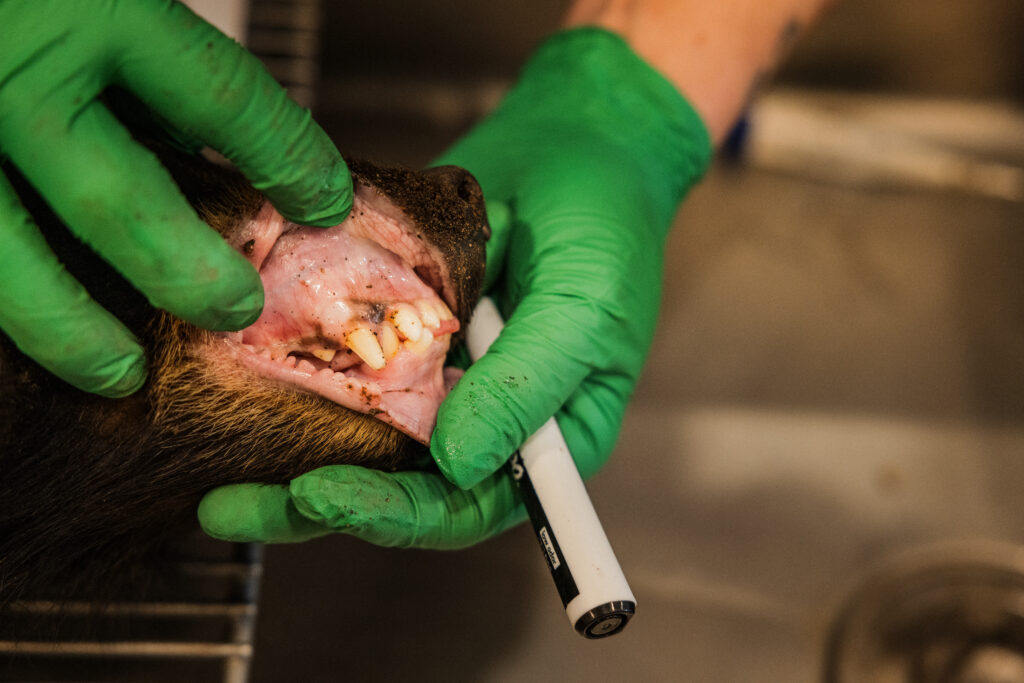
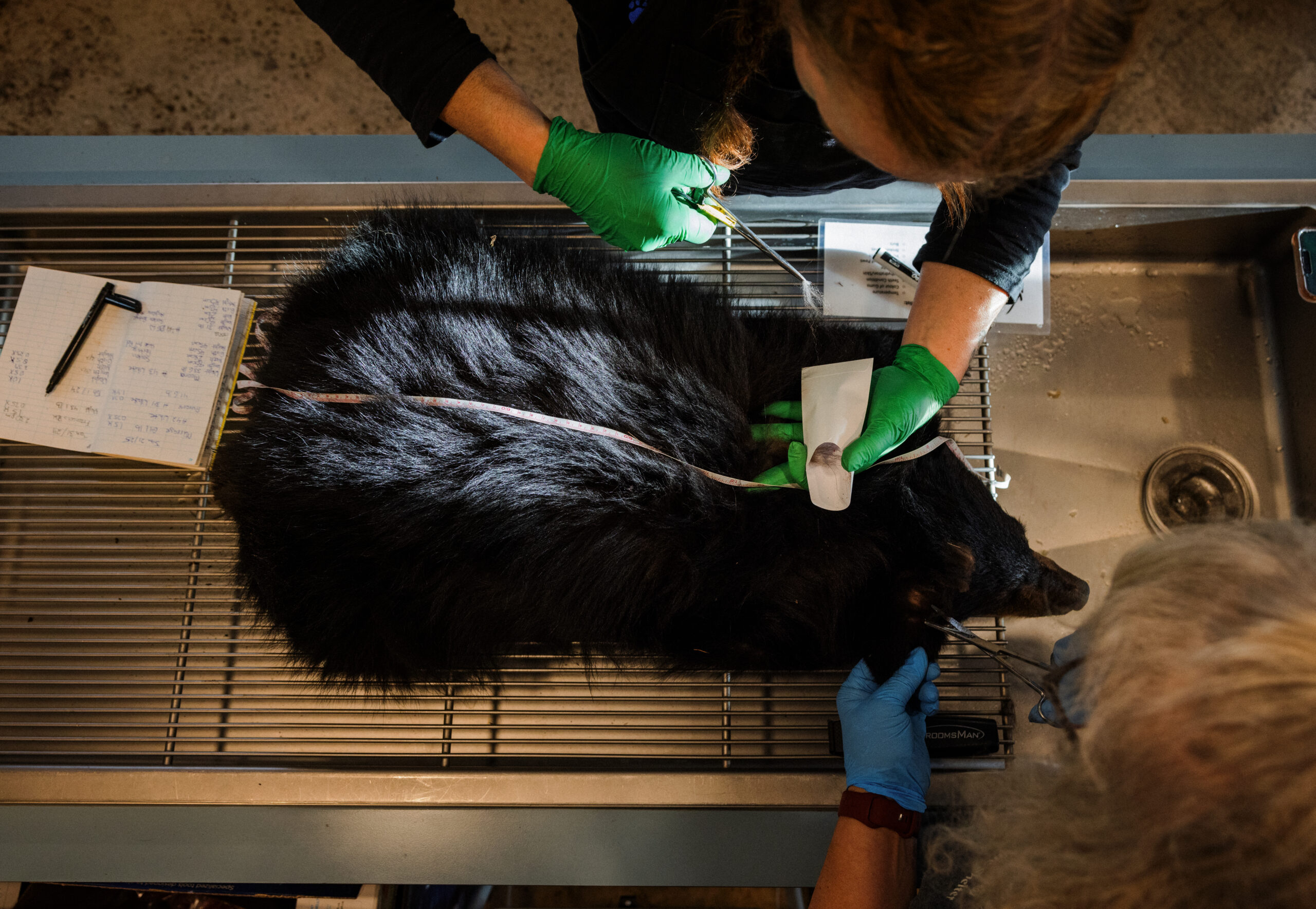
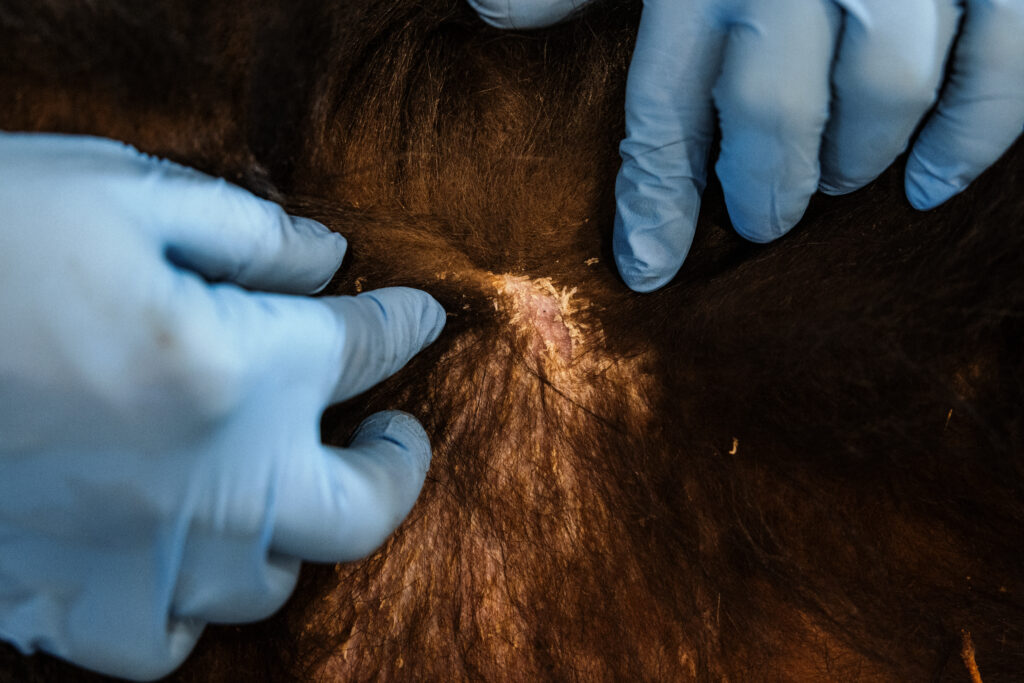
Most times, no one knows how a cub was orphaned — it just shows up somewhere, alone, trying to find some food. But the connections aren’t hard to find.
An uptick in calls coming into Northern Lights starting in September closely aligned with last year’s wildfire season, which saw hundreds of fires burning through the summer and into the fall. The number of cubs showing up in communities also aligns with the natural cycle of the species and the impacts of drought. Fall is when bears are on a mission to eat as much as possible before winter sets in. In the north, months of sustained heat with little-to-no precipitation scorched berry bushes and other plants, leaving scant resources for the omnivorous animals.
Chris Darimont, a conservation scientist and professor at the University of Victoria, says it’s not surprising to see bears coming into communities in greater numbers during years when climate impacts are more severe.
“When there’s resource scarcity, wildlife take more chances to feed themselves,” he says. “And that includes entering spaces that are dominated by humans that may not be making good life choices with their garbage or apple trees or whatever.”
Lori Homstol, a biologist who specializes in human-bear conflict, says fall is when human-wildlife encounters typically start to increase.
“If you put yourself in a bear’s shoes, the hormones that flood their body in the fall probably make them feel hungry all the time,” she says. “No matter how much they eat, they never feel full.”
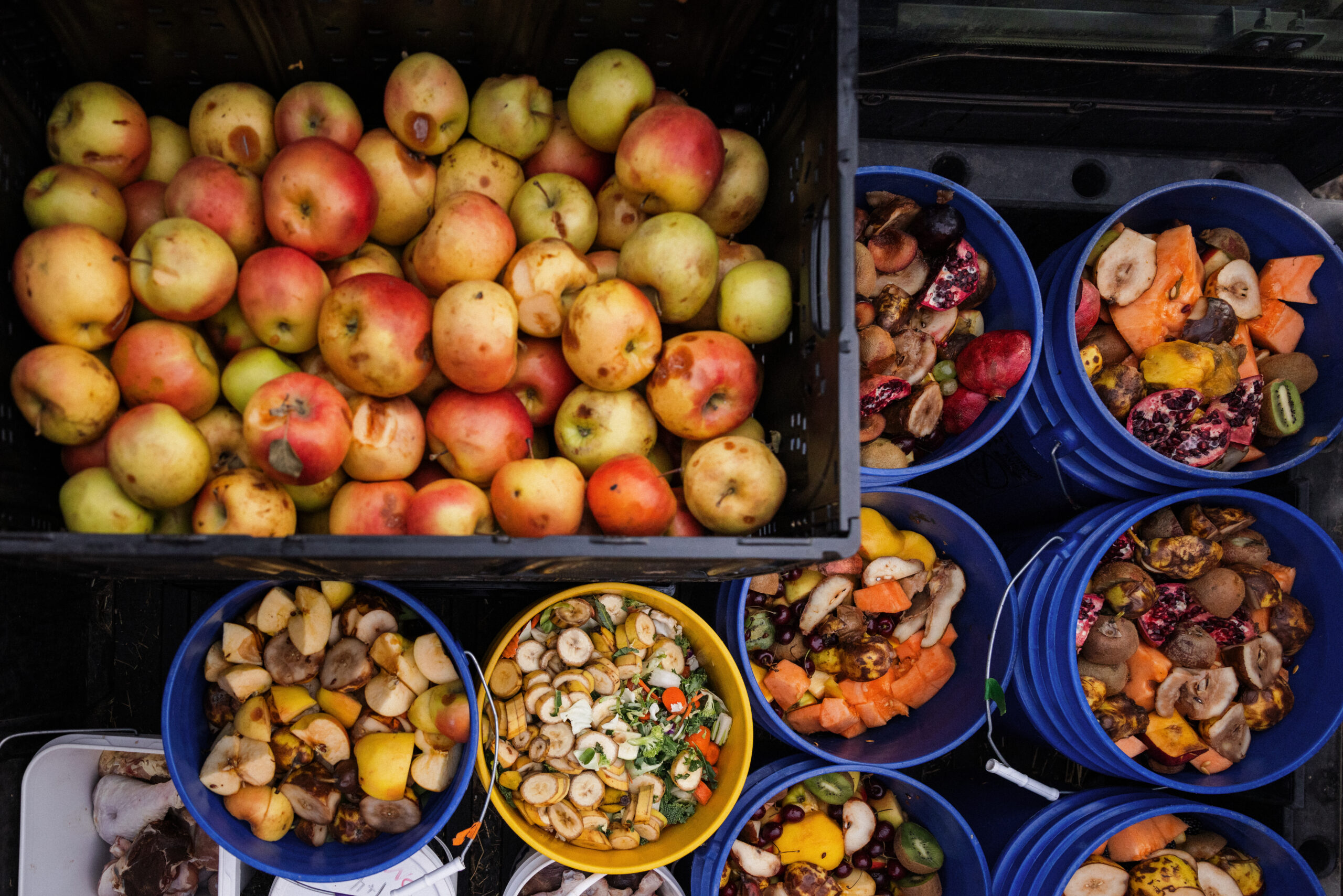
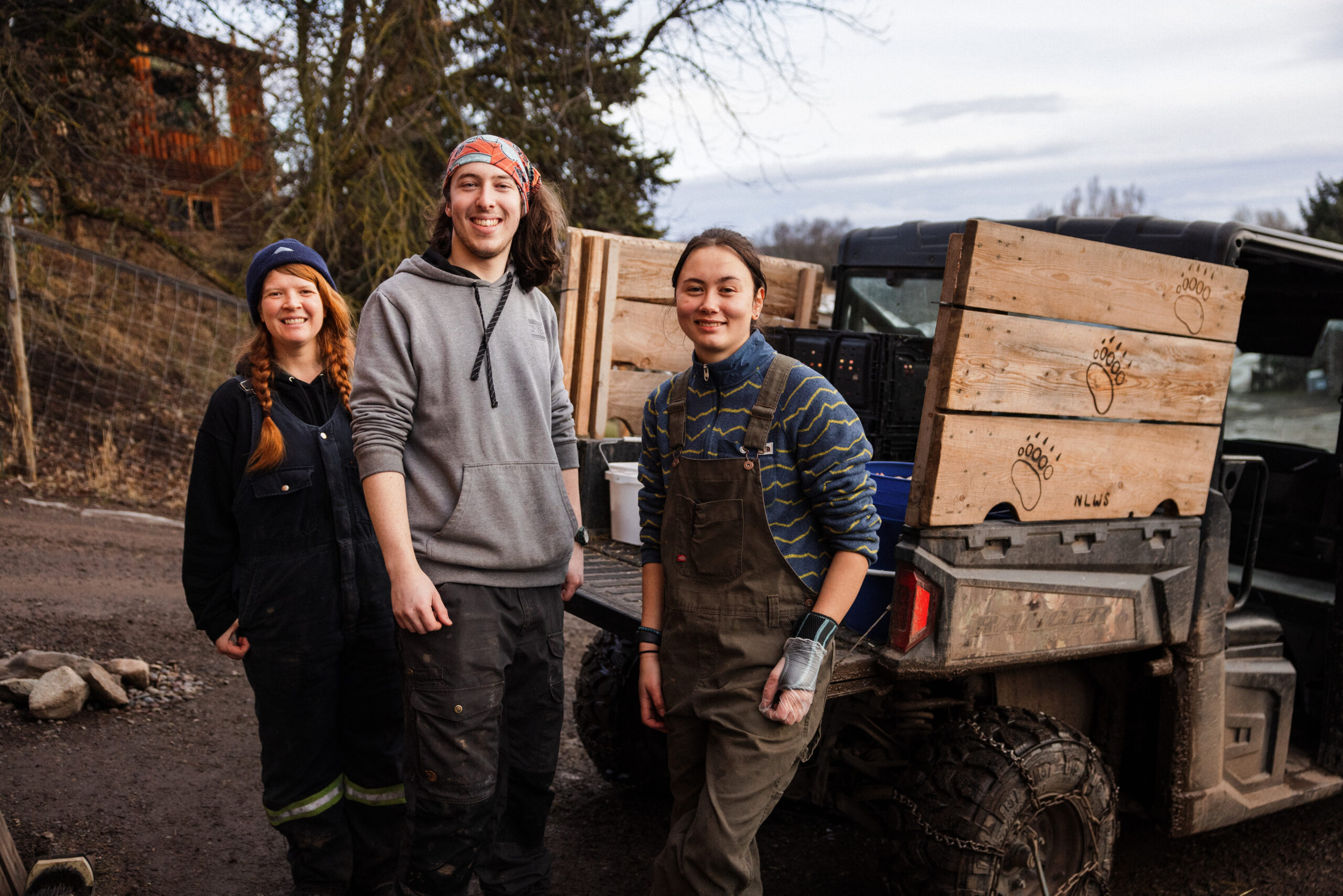
That incessant hunger drives bears to seek out high-calorie foods, and when the likes of drought and wildfire reduce available natural sources, like berries and salmon, bears follow their noses to wherever they can get a meal. Last year, communities across the northwest saw a significant increase in the number of bears spending time within municipal boundaries. In Smithers, it was common to see young black bears strolling down streets or hanging out on trails around town. Piles of poop littered lawns and backyard fruit trees were thoroughly picked over.
“They can eat and survive on grass but that’s not going to get them fat enough to have cubs, so they’re going to seek out those better food sources,” she says.
The reproductive cycle of bears also determines how this all plays out: the species mates in the spring but embryos don’t implant until the fall.
“The number of embryos that implant in the uterine wall depends on how much fat the bears put on,” Homstol explains. In other words, the fatter the bear, the more cubs she’ll have. And in a lean year, a pregnant female may have no cubs at all because doing so would jeopardize her survival.
Langen says this means the more human food we allow bears to consume, the more bears we’re going to see the following year.
“You are bringing up your number in your region by letting the bears eat the garbage and the fruit on your tree,” she says.
And while population density isn’t necessarily a primary driver of conflict, she says it sets the stage where there are more opportunities for people to come into contact with bears.
The main outcome of increased human-wildlife interactions is bears being killed. As the animals become habituated to humans, authorities are sometimes forced to shoot bears. B.C.’s conservation service office received more than 27,000 calls from the public last year and officers killed more than 600 black bears, according to provincial statistics. (But while the pressures on bears have increased, leading to more encounters and more calls, various policy changes have led to the number of animals being killed each year by conservation officers dropping far lower than averages from the 1990s and 2000s.)
Homstol emphasizes we tend to think about human-bear conflict from a very human perspective.
“Bears are just being bears,” she says. “They don’t distinguish between natural food and human food. It’s all just food, right? We’re the ones that make those distinctions, so we’re the ones that have to take responsibility.”

She says the most pressing issue of our time is finding solutions to the global climate crisis, which will benefit bears and humans alike. But we inevitably face decades of impacts that will continue to reduce those natural food sources, and in the short-term, the best way to prevent human-bear conflicts is to “take ownership of where bears are finding food.”
It isn’t just about doing a better job of storing our garbage, she says. People can also shift how they think about harvesting on the landscape. Not only should we reduce the likes of fruit trees in places bears will likely come in times of scarcity, we also need to protect natural food sources in prime bear habitat.
“As the wildfires are getting more intense, it’s more and more popular — especially with home insurance — that people are ‘fire-smarting’ around their homes, around their properties, around towns,” she says, alluding to B.C.’s fire smart program, which encourages homeowners and communities to protect properties and prepare before a fire is burning on their doorstep. “That’s super important and it also provides ideal growing conditions for berry bushes.”
She says that could be a win-win-win scenario, where harvesting from those berry bushes leaves more wild berries on the landscape, reduces attractants and makes sure people can still fill their freezers.
While climate change is putting intense pressure on bears, it’s not all bad news. The species can also benefit from wildfires.
“Wildfires are obviously, in the short term, pretty catastrophic,” Homstol says. “Some bears will actually die in wildfires if they can’t get out of the way, or get smoked out. But in the long term, burned out areas are actually really good habitat for a lot of species, including bears.”
When a fire burns through a landscape, the ground is fed a smorgasbord of nutrients that encourage abundant growth of grasses and other plant species.
“As the forest succession goes through, the next things to come up are the berry bushes and you get 35-plus years of berry bushes that do really well,” she explains. “They’re sort of partially shaded in this open canopy and surrounded by standing dead trees — if they’re not salvage logged.”
It’s uncertain, however, whether the benefits can outweigh the impacts. Climate change is increasing the size and intensity of wildfires and frequent, prolonged droughts and other extreme weather events like atmospheric rivers are disrupting natural cycles and, in some cases, directly preventing that regrowth.
“If you get a low snowpack and low amounts of rain, it doesn’t matter how good the sun and shade combination is,” she says. “Since the precipitation isn’t there, you’re going to have these very big failures.”
Langen emails the day after my visit with an update about the cub.
“We had Wonder’s leg X-rayed and it turns out that she was shot, which fractured her bones,” she writes.
That she was shot is ugly, but unsurprising according to Darimont. A hunter himself, he explains there are no requirements for hunters to account for their missed shots or wounded animals.
“There’s no obligation for hunters to report animals they take a shot at and either miss or think they miss or think they hit and cannot recover,” he says.
“Lucky for her, the bones stayed aligned and are healing well,” Langen adds. “The vet figures that she will be just fine.”
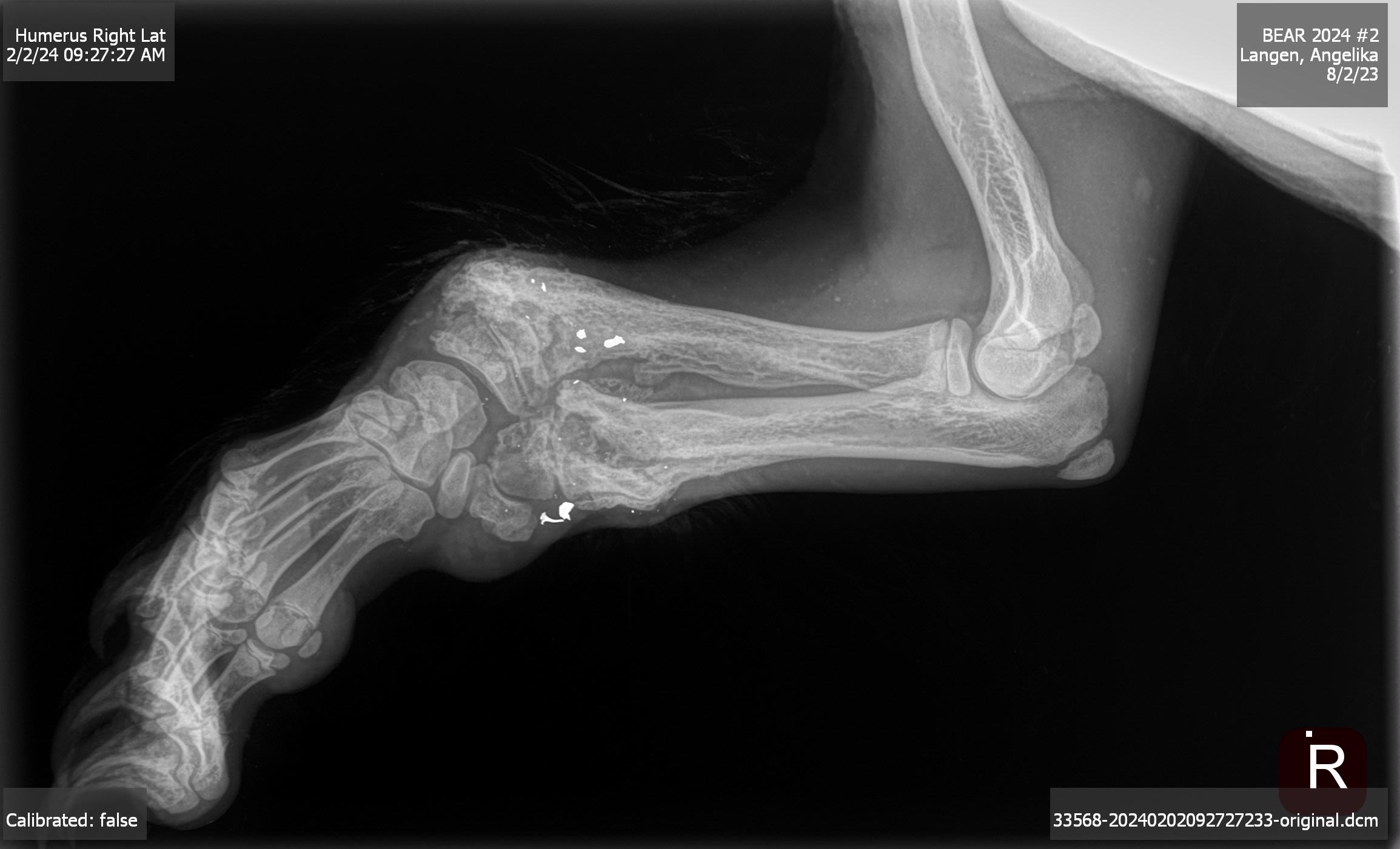
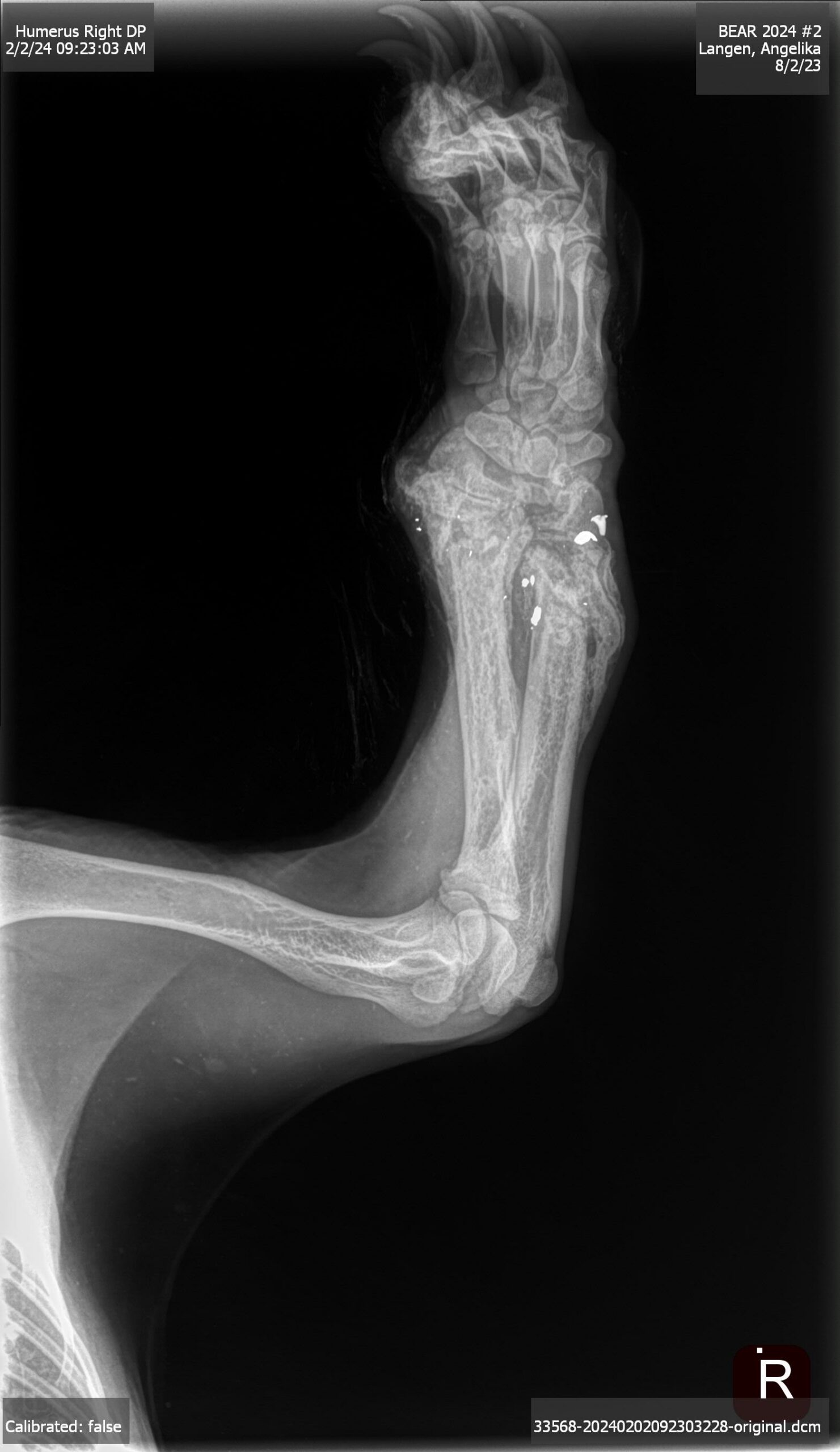
If Wonder survives, she will be part of a new study this year. Northern Lights is partnering with Darimont on a project to collar 30 bears and track them after their release. He doesn’t like collaring animals if he can avoid it, but says the research could provide insight into how the bears adapt back to their natural environment, based on their relative health when they first arrived at the shelter.
Some bears come in “in really good condition,” he says. “They’re there because the mom got smucked on the highway or they come in later in the season when they’ve reached a certain size and biomass.”
Others arrive when they’re tiny, he says. Those cubs may have lost their moms when they were a few weeks old or experienced conflict or injury that stunted their growth.
Comparing these two different groups by tracking their fates means they can hopefully answer whether those early factors matter.
“We might as well learn something important about these bears,” he says, noting the rescue and rehabilitation work requires significant resources. “It would be nice to know their fates and the ways by which they die, too.”
The research can also help rehabilitation centres navigate difficult decisions about cubs like Wonder, as they continue to deal with increasing numbers of orphans.
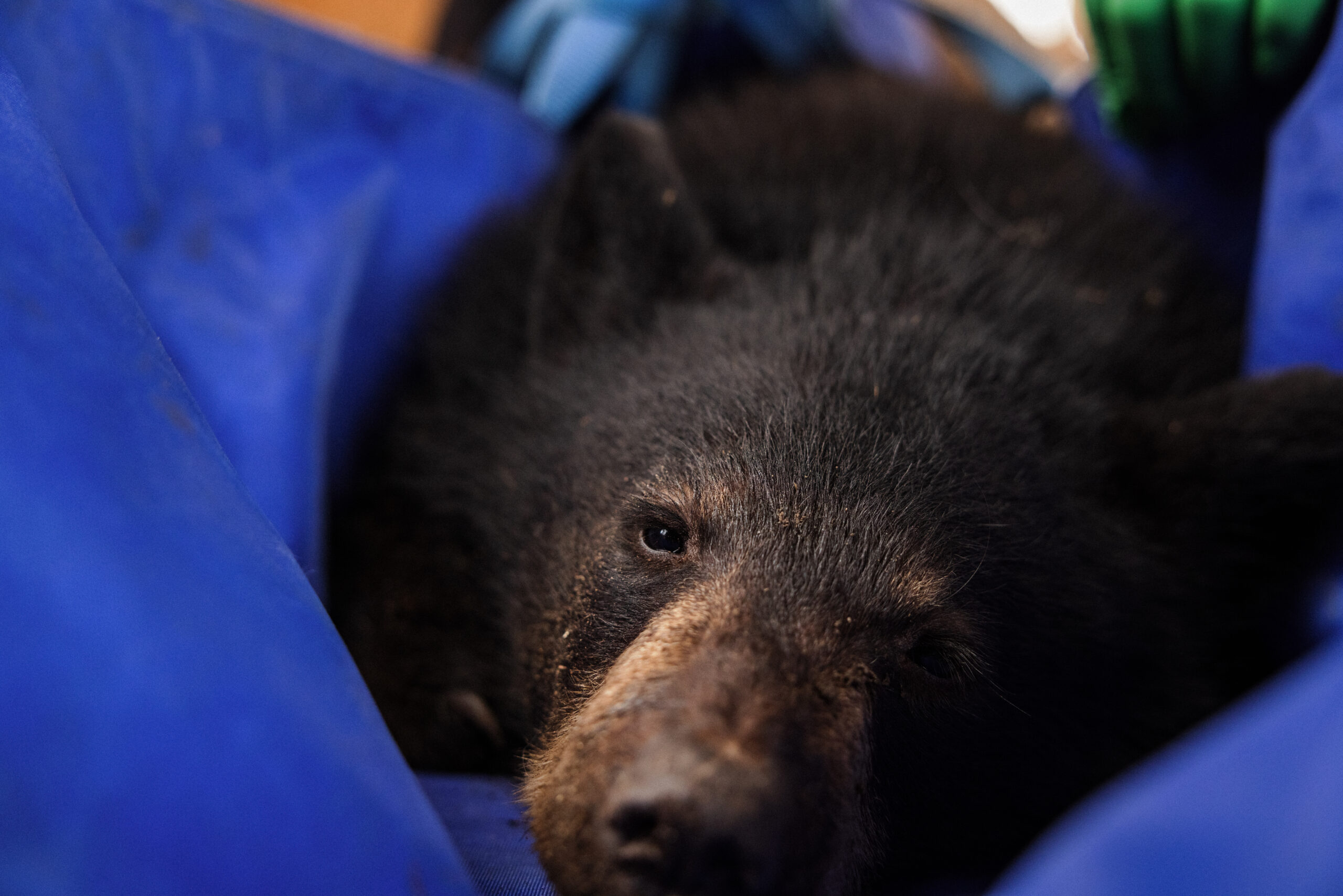
“If we find, for example, animals with a pre-existing injury never make it, well, then that may be important when centres like [Langen’s] and others have to make tough decisions where they’re busting at the seams and there may be animals that are just not suitable candidates for rehab and release,” he says.
Langen says they’ve rescued and rehabilitated more than 800 bears since she started doing this work, but they rarely know what happens to those animals.
“There’s no evidence that it’s causing harm,” she says of the work they do. “There’s also no evidence that the bears are surviving. But that will change this year.”
